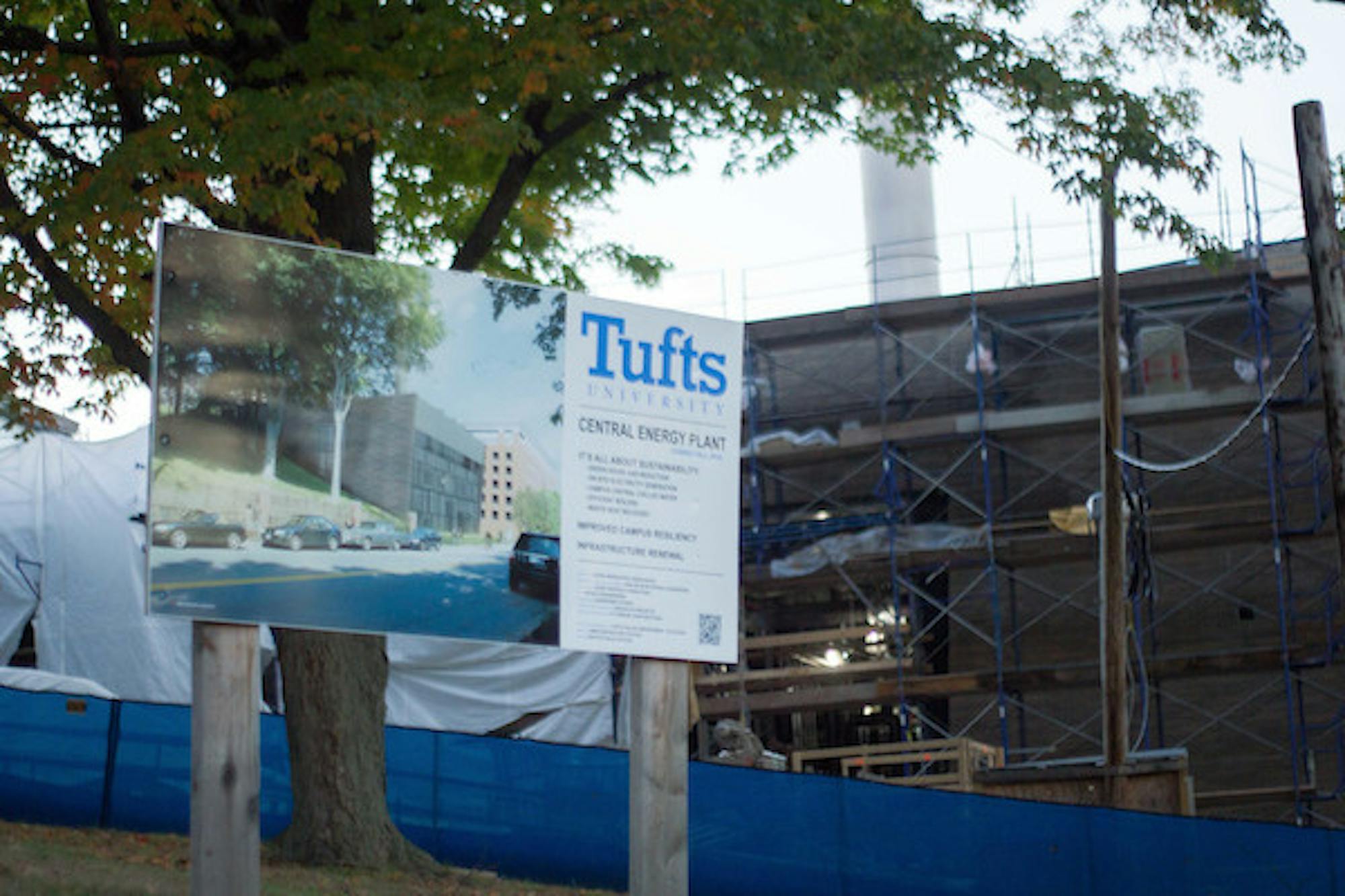Construction of the new Central Energy Plant (CEP) will continue into 2017, several months after the originally projected completion date of summer 2016, according to Vice President for Operations Linda Snyder.
According to Randall Preston, director of the University Energy Project, construction of the CEP began in April 2015.
Construction was initially scheduled to begin earlier in the season, but the snowfall pushed the construction back to the end of April 2015, Snyder said.
According to a March 2015 Daily article,Preston projected that the CEP would be completed by the summer of 2016. At this time the plant is about 70-75 percent complete, according to Preston.
The project completion date has been delayed accordingly, Snyder said.
"We currently expect to get the occupancy certificate in January 2017 which is about three months later, maybe four months later than expected, and then we will start this lengthy commissioning process to bring the plant into operation," she said.
The current CEP energy plant is about 60 years old and is not very efficient, Preston said.
"The new Central Energy Plant will be more modern, maintainable and efficient," Preston said. "It will also improve our sustainability, reducing our greenhouse gas emissions by 14 percent for the Medford/Somerville campus on a yearly basis."
The construction of the CEP involves replacing and updating the infrastructure of the utility delivery systems underground, Snyder said. This work has allowed the construction team to improve other parts of campus, including an improved road and walkway outside of Braker Hall. The work also helped to improve drainage of the Academic Quad to prevent local flooding during rain storms, according to Snyder.
The CEP will also help utilities on the Medford/Somerville campus be more self-reliant, Preston said.
"[The CEP] can operate in an 'island mode,' completely separated from the grid, so that if there's a storm we can continue to operate," Preston said. "Currently, if we lose connection to the grid during the winter we can still produce steam at the old plant, but we cannot provide heating because we will not have electricity. The Central Energy Plant, on the other hand, will produce both electricity and steam, as well as distribute hot and chilled water."
The chilled water will provide cooling for buildings, replacing the outdated metal chillers that are presently outside many buildings, according to Snyder.
"The plant, when it's in operation delivering chilled water to the various academic buildings will be much quieter, much more reliable and better for the education[al] experience," Snyder said.
Almost all of the major equipment is installed in the plant, and now the construction team is in the process of connecting the equipment to delivery systems, Preston said.
According to Preston, many uphill buildings temporarily lost steam and hot water on Sept. 29, due to the construction needed to connect the CEP to underground delivery systems.
"As part of the utility upgrades, some steam pipes are routed in the basement of Miner Hall. Steam had to be shut down to work on those lines," Preston said.
Steam for Miner Hall, Tisch Library, Anderson Hall, Robinson Hall, Bray Laboratory, Bromfield-Pearson Hall and 520 Boston Ave. was closed off for most of the day, while other buildings lost access in the morning and at night, according to the Tufts Construction website. Brown and Brew, Carmichael Hall, Curtis Hall, Paige Hall and Tisch Library also lost access to steam that day. As those buildings rely on steam to heat water, they were unable to produce hot water, according to the Tufts Construction website.
Carmichael Dining Center had no access to hot water from 7-9 p.m. on Sept. 29, but was still able to continue to serve food, according to Director of Dining and Business Services Patti Klos.
"Typically if we experience a hot water outage we would switch from reusable dinnerware to disposable, because we would not have the ability to wash enough in time ... if guests come in," Klos said. "We also have alternative means for hand-sanitizing and we have chemical means for pot washing."
Steam was returned after that day's construction was completed, Preston said.
The construction team tries to minimize the effects of these shutdowns by giving as much advance warning as possible and scheduling them for convenient times, according to Preston.
The construction team is planning some partial electrical shutdowns on Saturdays later in the fall, and is hoping to complete final electrical connections in January, Preston said.
"There will be more shutdowns, but at this point I cannot tell exactly when they will occur," Preston said. "There is also a similar process for electrical work in order to shift from the old lines to the new ones."
Overall, Snyder explained that even though the construction project will take more time to complete, the CEP is being built with a high level of quality and care.
"When you’re stewards of the campus you have to look at the long goal, because you want the campus to exist for hundreds of more years," Snyder said. "You want the work that you do today to contribute to that long history and create the best environment for learning and life that we can."
Construction on Central Energy Plant continues after initial delay






